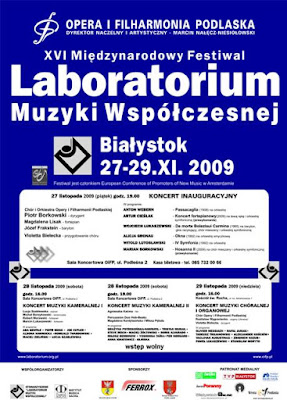Bleu 2 in Poland

I first met Marcin Wierzbicki in Cracovie in 2000 during the Acanthes / Ircam summer academy. He is a great composer with a deep knowledge of acoustics, electronic music, interactive music, spectral sound processing, and more! Tonight, he is spatializing my composition Bleu 2 (electronic music) during the Laboratory Festival in Bialystok. In case you're in the area, make sure to attend the concert: you'll get to hear Marcin's brand new composition Transient Music for computer.


